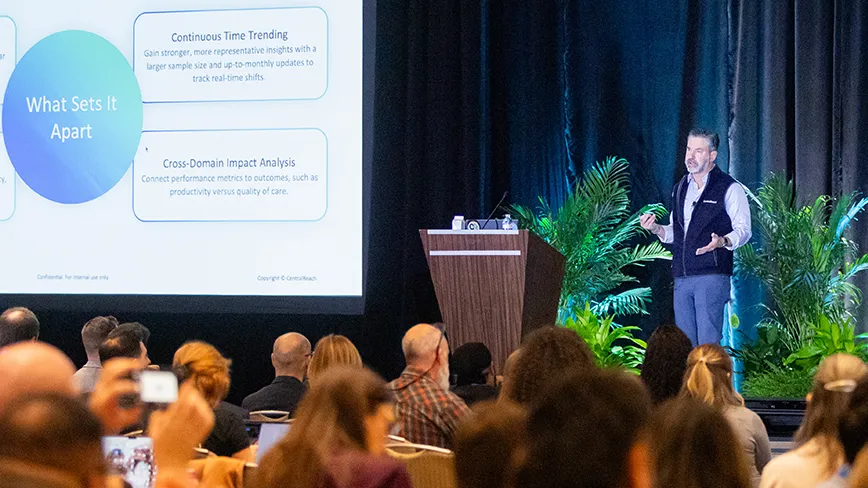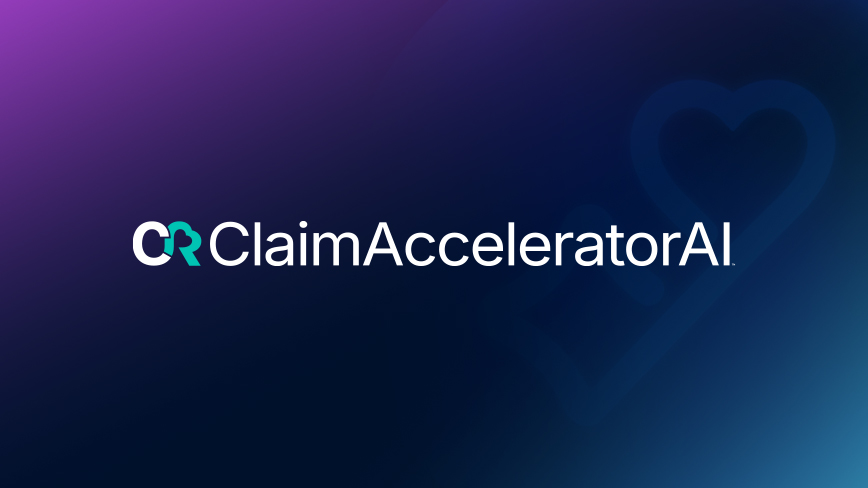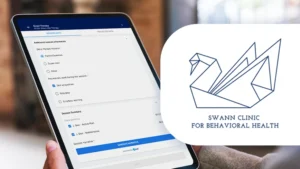Introduction.
Welcome back for the second of our 2-part series on laying the foundation for measuring client outcomes. In part one, we asserted that organizations with clearly defined, distinct programs that provide specialized services matched to their target clients' needs are better positioned to measure the customer-oriented business results other organizations struggle to evaluate. These include quality services, client progress, and quality of life outcomes. They are also more likely to track key performance indicators (KPIs) related to quality assurance initiatives.
In addition, we propounded that organizations that plan and describe their program elements in advance of launching new services are at an advantage. Finally, we shared several benefits that ABA companies would gain by defining their clinical programs beyond the primary benefit — a precondition for measuring client outcomes (refer to Part I for a description of these benefits).
A main intention of Part I was to demonstrate the importance of having clearly defined and distinct programs tailored to specific clients' needs – in place of the all-too-common alternative… one general service that encompasses everything you do (i.e., “ABA services”).
In Part II, we will take you to the next level by guiding you through the organization of your existing services into programs and then defining them. We will also share insights that will help you:
- Understand what we mean by the term program.
- Plan and define your organization’s programs.
- Outline key elements of a suitable program description to accomplish your objectives.
- Utilize program descriptions to guide critical decisions in specific business processes.
- Build levels into your programs based on the skills & strategies it aims to establish.
- Select creative program names that are fitting for your target population.
...And more. Read on!
Tactics for defining programs.
In this context, the term program refers to a “set of planned activities that are designed to produce a specific result” (Miller, 2017), which differs from, say, a skill acquisition program designed to teach individuals new skills. In the broader healthcare market, you may also see the term “service line,” which may be less confusing given the multiple uses of the word “program” in behavioral services.
To help you plan and design a new program or refine an existing one, we've highlighted four practical tactics that we’ve learned from experienced, expert program designers.
1. Identify the challenge you need to solve.
Program designers recommend that before dedicating time & effort and investing financial resources into developing a program, it's vital that you fully understand the challenge you intend the program to solve or the societal need it will address. Kettner et al. (2013) recommend that program planners start by conducting an analysis. A program analysis entails identifying and understanding the condition people are experiencing. For example, how many people are experiencing the condition? Who are they? Where do they live? How many people experience the condition as mild, moderate, or severe?
2. Conduct a needs assessment.
After you have identified the challenge you intend to solve, you'll want to conduct a needs assessment to determine the primary types of needs of clients who will be seeking your help. A needs assessment involves identifying the different needs of the people experiencing the condition. For example: what do people with this challenge perceive their needs to be – and what percentage who seek help are being served? What is the demand for your services in your community compared to the need for the same services in other comparable regions?
3. Surmise how your program will solve the challenge.
If your program is successful, then what results will it produce? What effect do you expect the interventions (i.e., the treatment package) to have on the target population? What do individuals and process contributors need to produce to implement and monitor the program? What specific tasks and steps must people complete for the program to be delivered successfully? To ensure you answer these and similar questions, you'll want to formulate a program hypothesis, which is simply a series of "if-then" statements about the program. As part of the process of developing a program hypothesis, you'll identify the goals, outcomes, process objectives, and program activities for the program.
4. Describe the service elements.
The next step is to identify and define the elements that go into the delivery of the service, which involves breaking down the program into essential elements and defining them precisely. Kettner et al., 2013 organize the elements into four categories: inputs, throughputs, outputs, and outcomes.
- Inputs are the resources and materials that an organization needs to deliver the program. These include clients, staff, financial resources, materials, equipment, technology, and best practices.
- Throughputs are the processes and procedures you implement to execute the program. Describing the throughputs involves clarifying the services the company provides and defining the critical processes & activities that go into the provision of each service. It also entails detailing the method of intervention.
- Outputs are the valuable products of processes or activities that lead to the clients' desired outcomes. Therefore, it's crucial to identify intermediate outputs and final outputs for your program(s). For example, you may pinpoint an intermediate output such as "a client who met all their skill acquisition goals in six months" or a final output like "a child who scores within the typical range on all sections of a norm-referenced assessment."
- An outcome is "a measurable change in the quality of life achieved by a client between entry into and exit from a program" (Kettner et al., 2013). Programs typically measure outcomes by numerical counts, standardized measures, level of functioning scales, or client satisfaction.
Key elements of a suitable program description.
After applying the tactics outlined above to design a new program or refine an existing one, the next step is to develop a comprehensive program description. A program description should center around the clinical model/framework that serves as the foundation for the design and standardization of all your behavioral programs.
Whether you are considering adding a new program or in the process of organizing your services into programs & defining them, these guidelines will help you draft a complete program description.
In the program description, it’s essential to:
- Provide an overview of the company's clinical model/ framework and describe it using clear, concise, and consistent language.
- Define the program components (i.e., the mix of interventions) and describe the company's therapeutic orientation.
- Explain how the clinical model/framework drives the company's approach to assessment, analysis, treatment plan development, intervention, and evaluation.
- Describe how the program is driven by research to practice, desired business results, customer requirements, philosophy, and core values.
- Detail how your clinical model/framework guides most aspects of your service delivery, such as clinical decisions, instructional and behavior support procedures, solutions, targeted client outcomes, and client admissions.
- Specify how the program differentiates itself from the ones offered by your competitors.
- Highlight how the program addresses clients' unique needs more effectively, efficiently, or at a lower cost or effort than other solutions available to your target population.
Once your company has a complete, up-to-date program description, you can use some or all of the content for a multitude of purposes, including:
- Attracting candidates who identify with the underlying clinical model/framework
- Setting expectations for new hires during onboarding
- Directing and focusing new hire training
- Developing marketing plans
- Describing services to prospective clients
- Identifying strengths and areas for improvement
Implement program levels with "kid-friendly" names.
After you've done all the hard work of clearly defining and describing your program(s), we encourage you to take two additional steps.
1. Consider establishing levels within your program(s).
This can be done by grouping target skills and strategies into categories and determining mastery criteria or fluency aims for each skill/strategy. We see many advantages to creating levels within your programs. Levels enable your program designers to more easily:
- Conduct component-composite analyses and arrange instructional content into carefully organized sequences.
- Create an instructional skills list that organizes pivotal skills into repertoire areas outlining what your team will teach in the program.
- Design instructional materials, practice exercises, and generalization activities
- Create teacher's guides and describe implementation and error correction procedures.
- Develop an evaluation plan that specifies the measures, data sources, timetable, and staff members responsible for obtaining progress monitoring and assessment data.
- Select and integrate assessments available for purchase or create in-company assessments to evaluate each client's starting level and monitor progress throughout the program.
- Identify and incorporate supporting curricula and learning materials available for purchase (e.g., Direct Instruction programs such as SRA/McGraw Hill's Language for Learning® or Reading Mastery®).
Furthermore, program levels provide your clients and staff with distinct milestones to make an all-out effort to achieve. Many clients participate in treatment for many hours per week across many years. Often companies describe their "ABA Services" with no discernable end or marked progress indicators.
Consider what it may be like for families to enroll their child in a treatment that comes across as being monotonous and perpetual. Why not organize your services into programs and break down your programs into levels? This structure presents your staff with opportunities to provide special recognition to clients for completing levels and your clients more occasions to celebrate easy-to-communicate achievements with their families and friends. Further, it gives start and endpoints, breaking up the monotony of intensive intervention and providing clients with a greater sense of accomplishment.
2. Brainstorm and decide on child-friendly program names.
We understand that you provide medically necessary ABA treatment to families with children with intellectual and developmental disabilities; however, from our perspective, that should not preclude you from devising programs and levels with fun, age-appropriate, child-friendly names. Let's return to the swimming lesson example we discussed in part one of this series. Do you think the "Learn to Swim" program that uses bear names to represent skill clusters (i.e., levels) is any less technical or systematic, or beneficial to our children's physical, emotional, and social development? We don't think so. Our children love the overall theme of the swim school and enjoyed "being" in each sleuth of bears. In addition, choosing child-friendly program names opens numerous opportunities for minor but valued enhancements to your company culture. For example, fun program names can inspire how you decorate your treatment center(s), enrich your teaching and learning materials, spruce up your marketing products, and influence the fun activities & rewards you make available to clients.
Implications on ABA as a whole.
The field of ABA has proliferated over the past 5 to 7 years due to increased awareness of autism and the importance of early detection, the expansion of commercial insurance and Medicaid coverage for ABA services, the infusion of capital, and improvements in industry-specific technology. However, companies must begin to shift away from providing generic casework services to ensure that commercial payers continue reimbursing for delivering this medically necessary service. Moving to create well-defined and quantifiable programs that match their target clients' needs will enable organizations to measure outcomes and service quality more effectively -- thus improving client and family satisfaction. It will also clarify its purpose and streamline and optimize hiring, onboarding, and new hire training. Specific, detailed programs will help you refine job descriptions to attract more suitable candidates and then train new hires with better precision -- arming them with everything they need to succeed in their role.
A closing note.
ABA organizations can positively impact employee engagement and service quality by assigning staff to programs instead of clients. As a result, practitioners will have a chance to build confidence and become effective at delivering one targeted application of behavioral services before expanding into new ones. In addition, clients will have an opportunity to participate in a carefully designed program provided by practitioners with specialized expertise and experience in the areas they need help with most. In conclusion, since programs like the ones described in this series exist for the sole purpose of producing results for a target population, if all ABA organizations made this change, certain brands would emerge from the rest and become synonymous with high-quality care in a relatively short period.
About the authors.

Shane Isley, M.S., BCBA, LBA
Shane Isley is an entrepreneur, performance thinking® practitioner, and management consultant who earned his bachelor’s and master’s degrees in behavior analysis from the University of North Texas. He serves as a Senior Consultant for the Performance Thinking Network and leads the company’s emerging Performance Thinking® For Behavioral Health/ABA Organizations service line. In his role, Shane works with a team of organizational performance consultants to deliver performance improvement programs and services to companies of all sizes to help them establish or improve their performance infrastructure, processes, policies and procedures, job definitions, and management capabilities. Shane collaborates with business owners and executives to develop and implement solutions that increase profitability and improve operational efficiency, employee engagement, and service quality.
Shane has over fifteen years of specialized experience and expertise in the behavioral health care market as a business owner, executive director, and performance improvement consultant. Shane remains committed to helping behavioral health organizations lay the foundation for sustainable, ethical, and profitable growth, focusing on organizational alignment, leadership & management development, and process improvement.

Jennifer Castellanos-Bonow, PhD, BCBA-D, LBA
Jennifer Castellanos-Bonow earned her PhD in Behavior Analysis from the University of Nevada, Reno (UNR), an experience that laid the foundation for her work with children with autism and other behavioral disorders. Jen has extensive experience leading clinical initiatives, designing training programs, maintaining best practices in delivering behavioral and psychological services, and developing and managing processes to support ethical and compliant service delivery. After serving for several years as the clinical director for Blueprints, based in Bellevue, WA, in 2019, Jen transitioned back to her hometown of Reno, Nevada. In partnership with a group of behavior analysts, she has helped establish The Learning Consultants, which aims to provide behavioral support and services to children with autism and parents and families facing acute behavioral challenges.
Jen serves as the managing partner and CEO applying her experience administering performance management systems, designing processes and implementation planning, navigating healthcare funding of behavioral services, and developing and maintaining policies and procedures to ensure regulatory compliance. She is also actively involved in the behavior analytic community, most recently by serving as the President of the Nevada Association for Behavior Analysis. While her roots are in early intervention, Jennifer’s foundation from UNR and recent work has provided her with wide-ranging experiences applying the science of behavior.
References.
Kettner, P. M., Moroney, R. M., & Martin, L. L. (2013). Designing and managing programs: An
effectiveness-based approach (4th ed.). SAGE Publications, Inc.
Miller, K. L. (2017). The use of evaluation in treatment programs for children with autism.
Behavior Analysis in Practice, 10(1), 35-44. https://doi.org/10.1007/s40617-016-0130-3.






